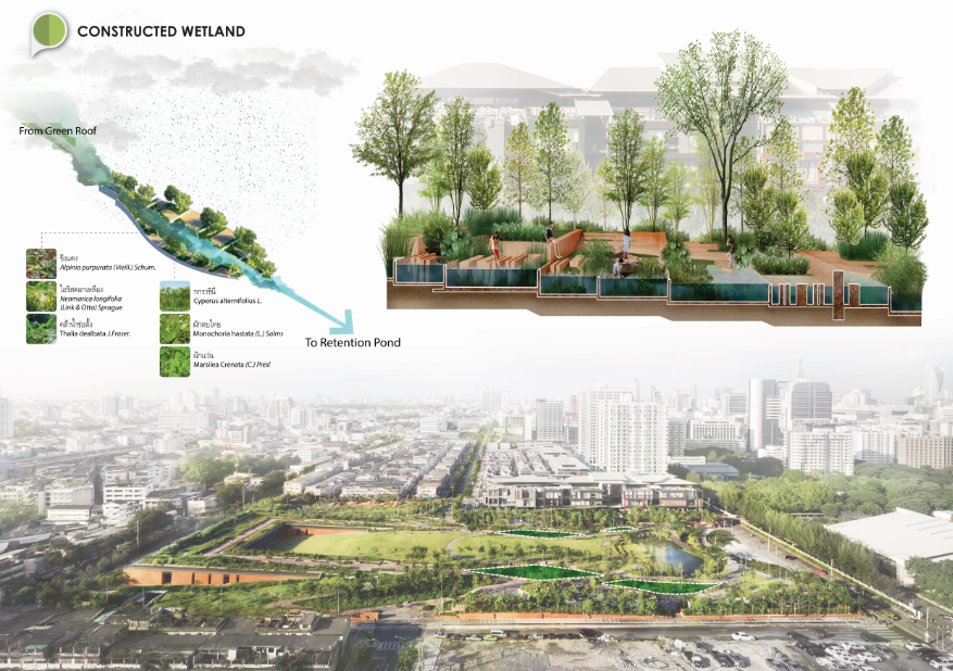
The Chulalongkorn University Centenary Park in Bangkok was created 2017. The Park is designed to face future uncertainties of climate change.
The Chulalongkorn University Centenary Park in Bangkok was created 2017. The Park is designed to face future uncertainties of climate change. Bangkok is a climate-vulnerable city with limited green space and this park, which contains the largest green roof in Thailand, is an invaluable addition to the ecological landscape.
The park addresses major environmental issues facing Bangkok as a rapidly developing, hard paved city: water management and the urban heat island effect. The design and environmental effects of the park reach beyond its boundaries into the surrounding neighborhood: a pedestrian and bicycle friendly road extends beyond the park in both directions, linking major roadways directly to the park’s walkways, and water from neighboring areas is treated by the park’s filtration system.
The park includes a constructed wetland, with a rain garden, retention pond and an underground water drainage system. Storage tanks throughout the park assure that water can be collected and distributed to the water treatment system for zero water discharge. Apart from the greenery, park visitors can benefit from the many organized public activities. It is the first piece of green infrastructure in the city of Bangkok, designed to mitigate ecological issues by also adding a vast outdoor space.

"There will be zero water discharge, the park that stores run-off water."
Chulalongkorn University Property, Land process, N7A architects Co, (CASE) Civil and Structural Engineers Co, EEC Engineering Network Co, Consulting and Management 49 Co, CORDIA, G49 Co.
A joint venture between the university, the landscape architects, and the municipality.
Making sure that Bangkok will be able to meet the future climate changes, such as heavy raining and the heat island effect, and to give back to the people of the city with a green area to enjoy.
"The park collects water from the surrounding neighborhood to integrate into the park’s filtration system for treatment. The treated wastewater we create within the park will be collected, cleaned and used not just in the park, but also to help the neighborhood with water as well. There will be zero water discharge, the park that stores run-off water.”
Damian Holmes, World Landscape Architects (article retrieved from worldlandscapearchitect.com).
Tech trend: Bioengineering
Societal trends: Urbanization, Preparedness, Merging, Circular society, Experiences
This case can be connected to SDG no 3 – good health and well-being - through providing citizens and visitors with a qualitative green areas in the city, no. 13 - climate action - as it will strengthen resilience for climate change, and no. 11 - sustainable cities and communities - partly due to that more green areas in the city will reduce the negative effect from e.g. traffic emissions.
No interview - online information only:
https://worldlandscapearchitect.com/chulalongkorn-centenary-park-green-infrastructure-for-the-city-of-bangkok/
https://www.chula.ac.th/en/cu-services/creative-space/cu-centenary-park/
https://www.eec.co.th/03%20Projects/002_Project%20reference/001_Chula100Yrs/EEC%20Project_CU100_eng.html